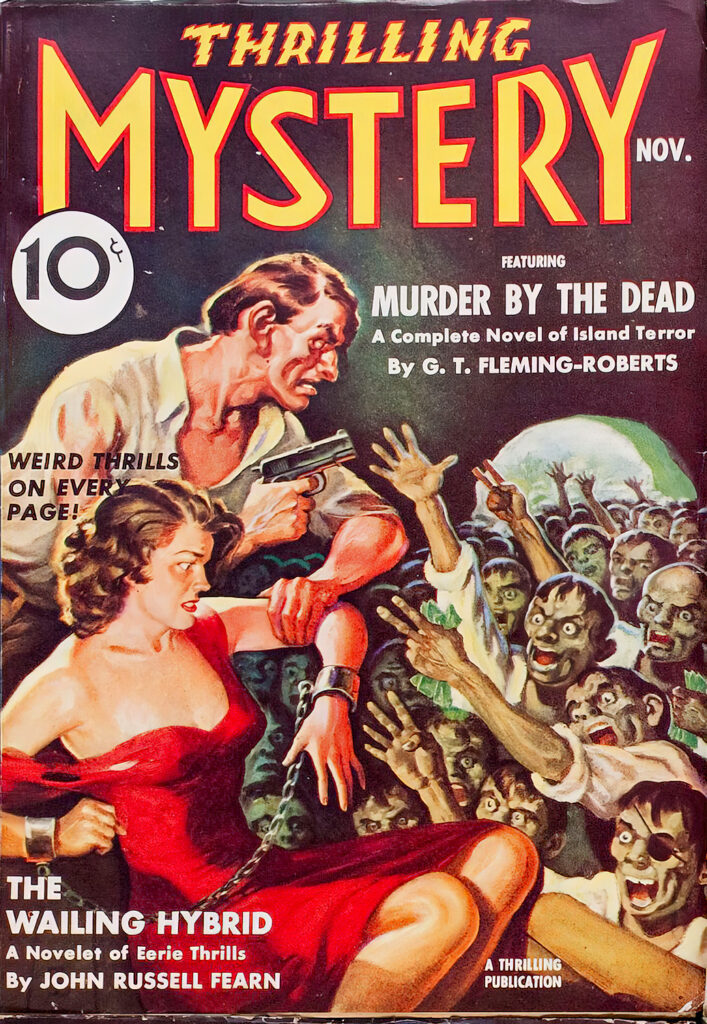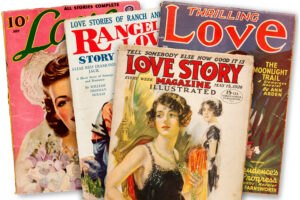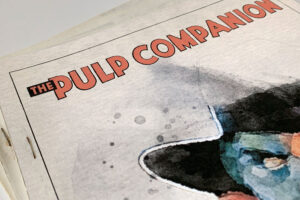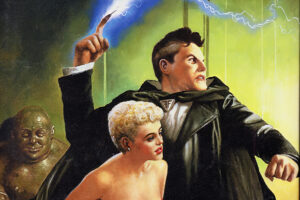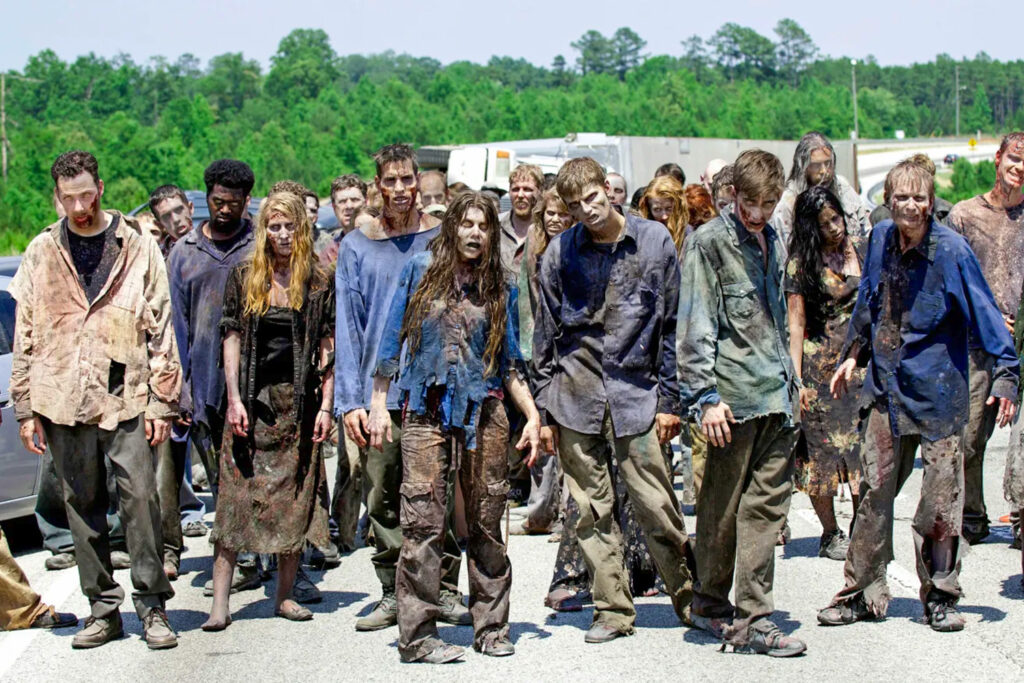
Long before the current zombie boom, reanimated horrors lurked in the pulps
Zombies are everywhere these days, shambling, crawling, and swarming after their human prey. Animated corpses have become a ubiquitous part of the popular culture landscape.
Wildly successful multimedia properties like The Walking Dead and World War Z demonstrate the continuing popularity of the zombie trope through films, television shows, books, graphic novels, and video games.
Zombies regularly cross into other genres, creating new hybrids like zombie westerns and zombie romances. We have even seen “zombified” versions of ostensibly unrelated cultural icons like Marvel superheroes and Jane Austen’s Pride and Prejudice.
The public’s current fascination with zombies is generally seen as the peak of a cultural trend that began with George Romero’s Night of the Living Dead (1968), continued through the 1970s and early 1980s with several sequel films and various knockoffs, and then faded somewhat in the 1990s, only to resurge after the turn of the millennium.
But there was an earlier “zombie boom” that predates the current fad, predates Romero’s groundbreaking film, and even predates the undead-filled EC horror comics of the 1950s.
Zombies arrive
Fanzine flashback
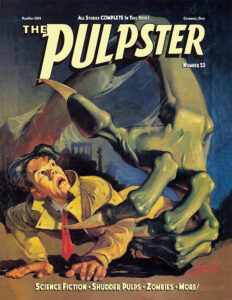 This article originally appeared in The Pulpster (#23) for PulpFest 2014. Reprinted with permission.
This article originally appeared in The Pulpster (#23) for PulpFest 2014. Reprinted with permission.
Zombies first entered the American public consciousness in the late 1920s and early 1930s, and for a little over a decade they were a frequent element in horror fiction both on the silver screen, on the stage, and in print, before fading into relative cultural obscurity until Romero reimagined the trope over two decades later. Many of these early zombie stories appeared in one of the most popular entertainment mediums of the time: the pulp magazines.
Recently, I edited an anthology, Zombies From the Pulps! (Skelos Press, 2014), that collected many of these tales of the walking dead, and I became fascinated by this early “zombie boom” in the late ’20s and early ’30s.
The zombies that appeared in the pulps are often quite different from the flesh-eating, apocalypse-causing zombies of today.
Rather, they are more commonly depicted as the product of Haitian voodoo (or, more properly, Vodou) and black magic — corpses brought back to life by a bokor or witch doctor and used for slave labor.
Undead creatures like vampires and ghouls have been a part of European and Near Eastern myth and folklore for centuries; and the best-known fictional animated corpse, the monster of Mary Shelley’s Frankenstein, first appeared in 1818; but it was the voodoo zombie that so attracted the American public’s fascination in the years between the World Wars. It was a fascination that had its origins in the colonialist anxieties and racial tensions that were permeating American society at the time and, as we will see, those anxieties were expressed in the popular fiction of the period.
In 1915, the U.S. military invaded Haiti and began an occupation that would last for nearly two decades. Ostensibly, the occupation was a reaction to fears of German-instigated political instability in the country, but the controversial enterprise continued long after the end of the First World War, becoming a true colonialist endeavor with paternalistic overtones.
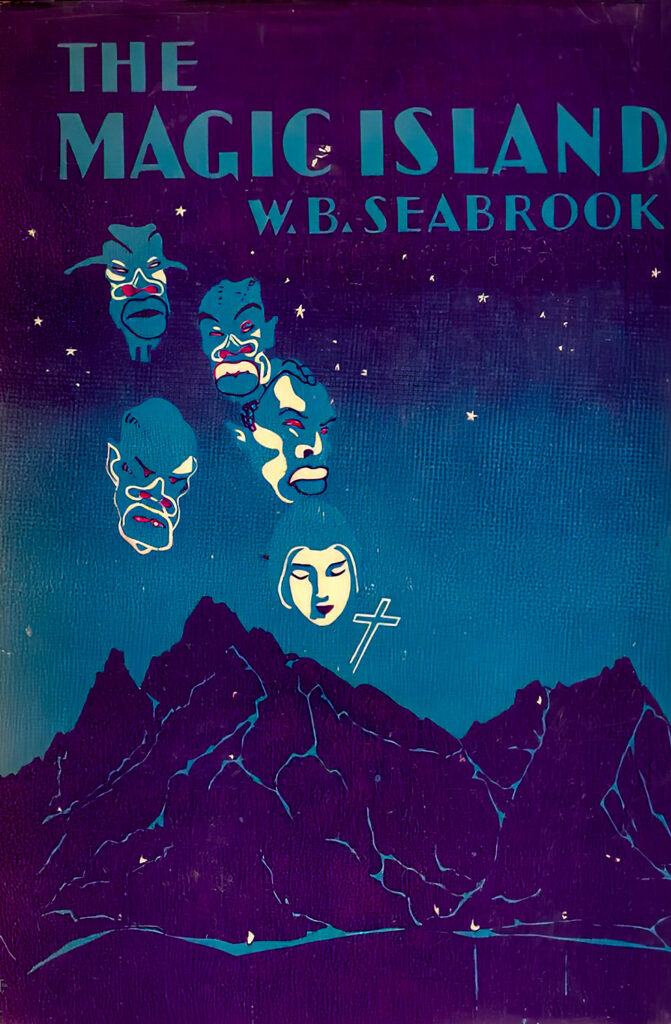 The United States oversaw a massive infrastructure improvement campaign in Haiti, constructing roads, bridges, canals, hospitals, and schools — but much of this was accomplished using forced local conscription labor. Tensions between the Haitian population and the American occupiers led to violent protests and revolts, ultimately making it an untenable situation. The United States began its withdrawal by the early 1930s, with the last troops leaving Haiti in 1934.
The United States oversaw a massive infrastructure improvement campaign in Haiti, constructing roads, bridges, canals, hospitals, and schools — but much of this was accomplished using forced local conscription labor. Tensions between the Haitian population and the American occupiers led to violent protests and revolts, ultimately making it an untenable situation. The United States began its withdrawal by the early 1930s, with the last troops leaving Haiti in 1934.
As American soldiers, missionaries, and expatriates began to return home from Haiti they brought with them tales of strange voodoo ceremonies and mysterious bokors, and even rumors of zombies. These stories began to appear occasionally in print in both fictional and non-fiction formats.
The most famous of these publications and the one that was most responsible for introducing the American public to the concept of the zombie, was William B. Seabrook’s 1929 travelogue of Haiti, The Magic Island.
Seabrook’s book was a best-seller and his chapter on zombies, “Dead Men Working in the Cane Fields,” has been reprinted many times. In it, he describes seeing three glassy-eyed zombie laborers, though he surmised they were not animated corpses, but rather mentally-disabled individuals. He also mentions that the Haitian penal code has an unusual and very specific law against administering a drug that simulates death — suggesting for the first time that the origin of the zombie might be pharmacological rather than supernatural. This idea was given widespread currency years later by ethnobotanist Wade Davis in his 1985 best-seller The Serpent and the Rainbow and its 1998 film adaptation by Wes Craven.
Seabrook’s book gives us some of the basic characteristics of the voodoo zombie that we see in the fiction of the time: the bokor or houdun who makes the zombies by robbing the graves of the recently deceased, the use of zombies as slave labor, and the fact that if a zombie tastes salt it will realize that it’s dead and return to its grave.
The numerous illustrations in the book by Austrian artist Alexander King would have been the first visual representations many Americans would have had of Haiti and its culture, of Vodou, and of zombies. King’s illustrations have frequently been vilified by scholars of Haitian culture as “emblematic of European- and American-centric representations of Haiti at their most exoticizing, titillating, and racist extreme” (Haiti and the Americas). The works of pulp fiction that were heavily influenced by Seabrook’s book and King’s illustrations would, for the most part, fit that description as well.
An isle of spooky inspiration
The Magic Island created something of a minor sensation. It inspired writer Garnett Weston (under the pseudonym G.W. Hutter) to pen the short story “Salt Is Not for Slaves” for the pulp magazine Ghost Stories. Weston was then chosen to write the screenplay for what would become the first motion picture in the genre, White Zombie (1932), starring Bela Lugosi and directed by Victor Halperin. Lugosi, coming off his break-out performance in Dracula (1931) the previous year, plays a zombie-master who uses his voodoo knowledge to enslave an American woman visiting Haiti with her fiancé, turning her into a zombie.
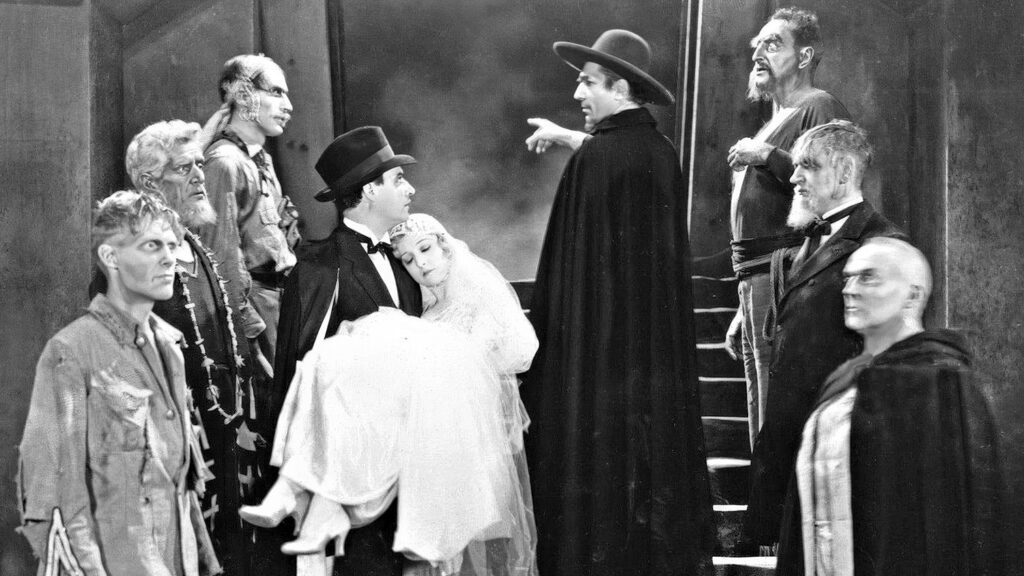
White Zombie was soon followed by the voodoo thriller Ouanga (1935) and then Revolt of the Zombies (1936), the latter also by Halperin. Several years later, King of the Zombies (1941) featured Nazis using an army of zombie slaves. Then, former sf pulp writer Curt Siodmak and partner Ardel Wray wrote the screenplay for the classic I Walked With a Zombie (1943). The cinematic portion of the early zombie fad finally came to an end with lesser efforts such as Revenge of the Zombies (1943), The Voodoo Man (1944), Isle of the Dead (1945), and Valley of the Zombies (1946).
Several novels and a number of short stories about zombies were published during this time as well. The popular cocktail known as “The Zombie” also appeared in the 1930s. The zombie had stumbled out of Haitian religion and folklore and into American popular culture.
But in truth, the pop culture zombie had little to do with true Haitian or African folklore or the actual religion of Vodou. Rather, it was a reflection of white America’s distorted vision of Afro-Caribbean spirituality and mysticism, filtered through the lens of a crumbling colonialist and racist system.
The basic premise of White Zombie, i.e. the threat of becoming enslaved, was one of the primary plot devices of early zombie fiction, in both cinema and the pulps. This is quite different than the threat posed in modern zombie fiction. The real fear in these early stories is often not of being attacked or eaten by zombies, but rather of becoming a zombie.
The voodoo zombie then is not merely the embodiment of racial oppression and enslavement but represents the potential for a reversal of the racial status quo and the loss of white privilege. It presents the reader or viewer with the possibility of the enslaver becoming the enslaved; it exploits the subconscious fears and anxieties inherent in a society stratified by race and gender and it threatens to undermine that social hierarchy. This was what made the voodoo zombie story such an effective narrative in the pulp era.
But not all of the stories of the living dead in the pulps are based on the voodoo-type zombie. Some harken back to Frankenstein with animated corpses given the semblance of life through scientific means. Others, perhaps more fantasy than horror, use ancient necromantic sorcery to raise up undead creatures. Some zombies are not dead at all but are living people who have been drugged or hypnotized by an evil zombie-master. But the majority of the zombie stories from this time are based on some variation of the voodoo style of the walking dead.
Because of this, it should not be surprising that many of the zombie stories from this period contain depictions of race and ethnicity that are highly problematic and often patently offensive. This includes the use of racist stereotypes and language that was unfortunately commonplace in early 20th-century America. Other stories have depictions of women that are clearly misogynistic and sexually exploitative.
Despite the often cringe-worthy material in some of these stories, I view these works as popular artifacts from which we can learn quite a bit about our shared cultural history — even the ugly parts — and come away with a better understanding of the historical context and social milieu in which the zombie genre first appeared and thrived.
Zombies from the pulps
Most of the stories I collected for Zombies From the Pulps! came from two types of pulp magazines: the weird-fiction pulps and the shudder pulps.
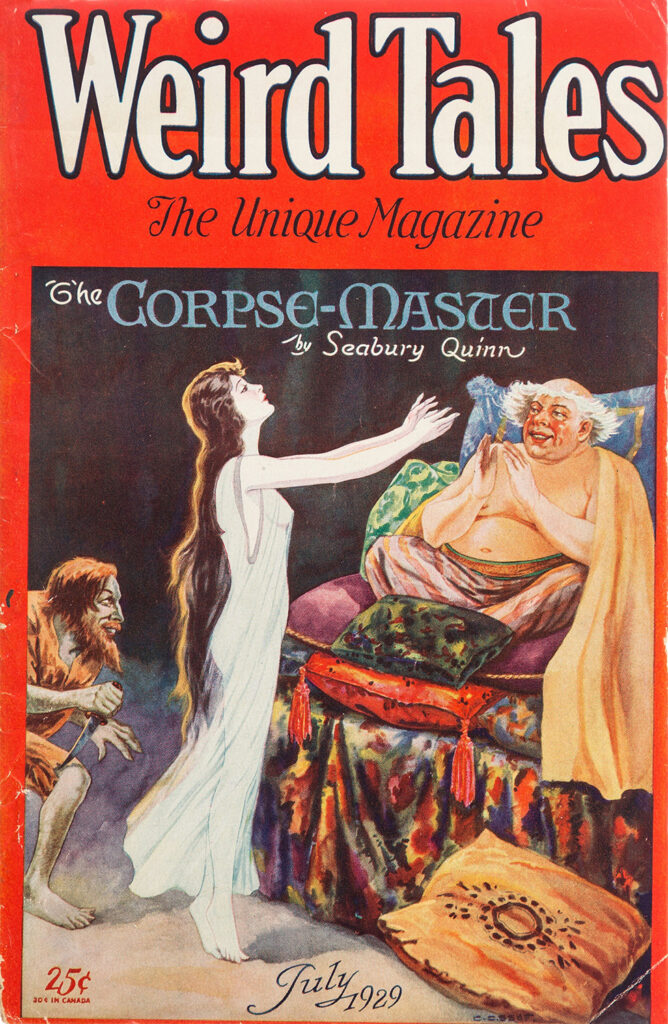 The primary weird-fiction pulp of the day was, of course, the legendary Weird Tales, first published in 1923. Weird Tales was one of the earliest magazines to specialize in supernatural fiction and it was in its pages that the modern American horror and fantasy genres were developed and refined by authors like H.P. Lovecraft and Robert E. Howard.
The primary weird-fiction pulp of the day was, of course, the legendary Weird Tales, first published in 1923. Weird Tales was one of the earliest magazines to specialize in supernatural fiction and it was in its pages that the modern American horror and fantasy genres were developed and refined by authors like H.P. Lovecraft and Robert E. Howard.
Other weird-fiction pulps included Strange Tales of Mystery and Terror (often shortened to just Strange Tales) and John W. Campbell’s Unknown. Authors such as Ray Bradbury, Robert Bloch, and Tennessee Williams got their start in these weird-fiction periodicals, and it was in magazines like Weird Tales and Unknown that pulp fiction often came closest to transcending its sub-literary status.
The shudder pulps or “weird menace” pulps, on the other hand, have a notorious reputation that is well-deserved. A sort of spin-off of mystery fiction, weird-menace stories featured seemingly supernatural threats that ultimately turn out to have a rational explanation. With titles like Dime Mystery, Terror Tales, and Thrilling Mystery, they are known for their lurid covers depicting scantily-clad women being attacked or tortured by hideous villains.
The stories, which took their cue from the gory and violent content of the French Grand Guignol Theater, relied far more on shock value and gratuitous, sexualized violence than on literary merit or narrative complexity to appeal to their readers.
The shudder pulps could be said to occupy a similar place in the pulp canon that the low-budget exploitation films of the 1970s hold in cinema (and perhaps also their 21st-century “torture porn” descendants such as Saw (2004), Hostel (2005), The Human Centipede (2010) and the like). It’s difficult for most people to understand the appeal of such material, but there is no doubt that there was a market for these magazines and they were certainly a hotbed for zombie stories.
A sampling of zombie tales and their authors
To get a feel for the types of zombie tales found in the pulps and the authors who wrote them, a brief overview of the stories I included in Zombies From the Pulps! might be helpful.
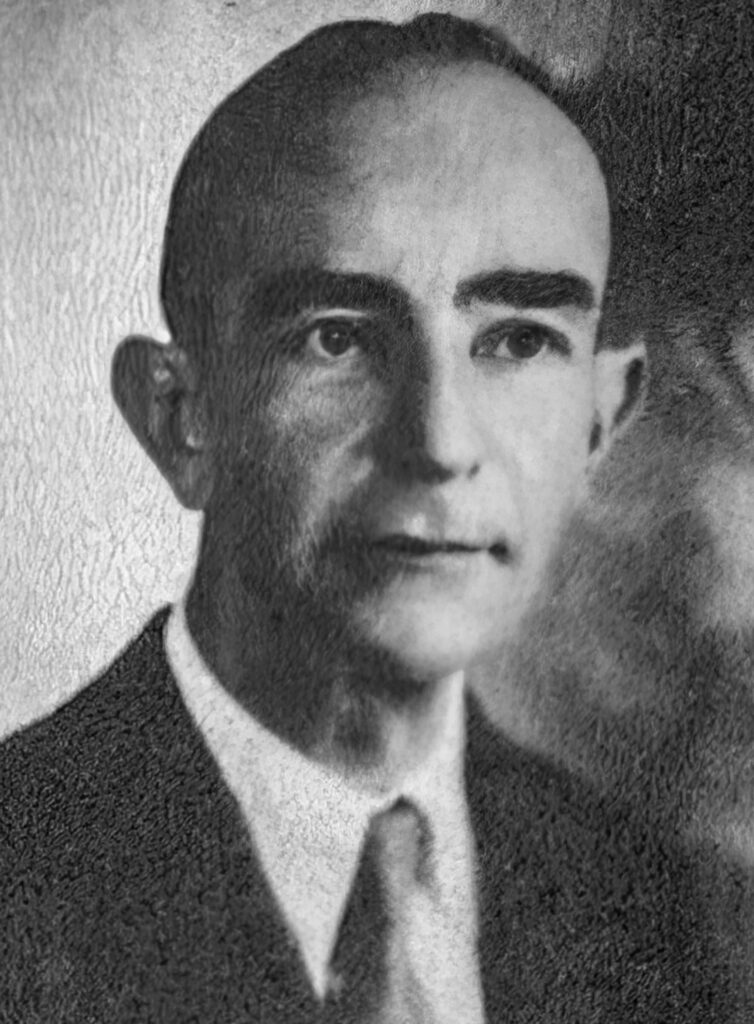
The initial entry in the collection, “Herbert West — Reanimator,” appeared first, not in a pulp, but in an amateur literary magazine, Home Brew, in 1922. Its author H.P. Lovecraft is considered to be one of the most important pioneers of the modern horror genre.
The story, which was ultimately reprinted in Weird Tales two decades later, is not a voodoo zombie tale but instead features a doctor who brings corpses back to a semblance of life through strange scientific means. The story was made famous decades later by its loose adaptation into the feature film Re-animator (1985), directed by Stuart Gordon.
Several Lovecraft stories could have qualified as zombie tales, including “The Outsider” and “Pickman’s Model,” but I selected this one as a prime example of the type of Frankenstein-inspired tale of animated corpses that could be found prior to the explosion of Haitian zombies in the 1920s and 1930s.

Pulp writer Henry S. Whitehead was a regular contributor to Weird Tales who served as a missionary in the Virgin Islands during the 1920s. There he heard tales of voodoo and zombies and wrote several stories that incorporated these elements. He is an excellent example of one of the Caribbean travelers of the period who brought tales of island folklore back to America. His story “Jumbee” published in Weird Tales in 1926 is a rare example of a voodoo zombie story before the publication of Seabrook’s The Magic Island.
“The Corpse-Master” by Seabury Quinn, on the other hand, may be the first zombie story that was directly inspired by The Magic Island. Published in the July 1929 issue of Weird Tales, “The Corpse-Master” is one of the prolific Quinn’s many stories of the occult detective Jules de Grandin. The influence of Seabrook’s just-released book can be seen in the mention of salt making a zombie return to its grave, as well as a final scene in which de Grandin expounds on the nature of zombies in a passage lifted almost verbatim from The Magic Island.
The January 1930 issue of Weird Tales saw the publication of “Dead Girl Finotte” by Henry De Vere Stacpoole, which may be the first pulp zombie story to directly mention Seabrook’s book by name, thus indicating an expectation of at least some familiarity with the work on the part of the reader. A former ship’s doctor from Ireland, Stacpoole was already an established novelist by the time he appeared in Weird Tales, and was best known for his tales of the South Seas. His most famous work, the 1908 novel The Blue Lagoon, was adapted to the silver screen on multiple occasions.
Garnett Wilson was another writer heavily inspired by Seabrook’s work. He wrote a review of The Magic Island and followed it up with the story “Salt Is Not for Slaves,” published in the August-September 1931 issue of the pulp Ghost Stories under the pen name G.W. Hutter (“Hutter” being his wife’s maiden name). It was this story along with his review of The Magic Island that got the attention of director Victor Halperin and landed Wilson the job of screenwriter for White Zombie.
Pulps take a strange turn
September 1931 saw the debut of Strange Tales, a competitor to Weird Tales, which specialized in the same type of stories and often hired the same writers as its older weird fiction counterpart. That first issue contained a zombie story from Ray Cummings, one of the great pioneers of early modern science fiction. Not a voodoo story, “The Dead Who Walk” begins with a scene of a walking corpse in a cemetery, not unlike the opening sequence of Romero’s Night of the Living Dead. Given his background, it should not be a surprise that Cummings relies on a scientific or, more properly, a science-fiction explanation for his zombies.
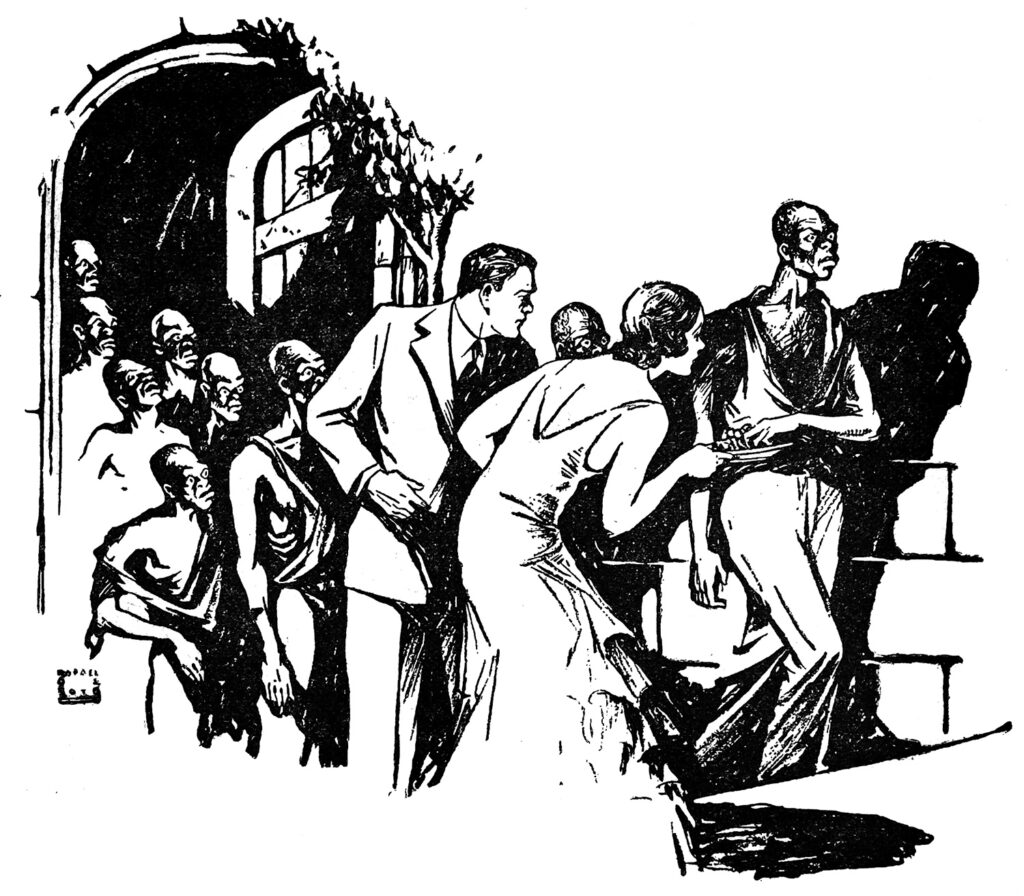
August Derleth is best known today as the founder of Arkham House, the publishing company responsible for reprinting and popularizing the works of Lovecraft and his Weird Tales contemporaries long after the magazine’s heyday. Derleth, along with his childhood friend and sometime-collaborator Mark Schorer, produced a classic zombie story for the June 1932 issue of Strange Tales titled “The House in the Magnolias.” Set in a mysterious old plantation house on the outskirts of New Orleans, the story can be described as an early example of the Southern Gothic genre. Once again we see salt used as the method of eliminating the zombies, with a means of delivery — pistachio candies — again lifted straight from The Magic Island.
The next story in the collection is a bit of a departure from the other entries. “Empire of the Necromancers” by Clark Ashton Smith is a fantasy story set on a dying Earth far in the future where modern civilization and science have been replaced by ancient technology and sorcery. The protagonists are two necromancers who raise an army of the undead to serve them.
Here we see zombies used in much the same that they are in modern fantasy role-playing games like Dungeons and Dragons or the Evil Dead film franchise. Smith’s natural talent as a poet, his love of baroque language, and his visionary imagination gave his prose a unique and surreal flavor that was unlike anything else his contemporaries in the pulps were doing.
A shudder of terror
With “The Devil’s Dowry,” published in the February 1935 issue of Terror Tales, we have our first entry from the shudder pulps. Author Ben Judson (a pseudonym for Judson Benjamin) penned a handful of weird-menace stories in the 1930s, but he also wrote for the western pulps. This story features a Haitian voodoo master practicing his art in a modern American city and with its “white slavery” theme and racist overtones (typical of these kinds of stories) it seems to take much of its inspiration from White Zombie.
Like several of the authors in the collection, E. Hoffmann Price was a frequent contributor to Weird Tales and the weird fiction pulps. He was also a correspondent and one-time collaborator with Lovecraft. But Price wrote stories for a number of publications during his career, from high-end pulps like Argosy to the lowly shudder pulps.
Like many of his contemporaries (including Hugh Cave and Robert E. Howard), he also tried his hand writing for the “spicies” — pulps that were essentially the soft-core erotica of the day (though in truth, they were quite tame by modern standards). There were “spicy” versions of most of the popular genres including Spicy Western, Spicy Detective, and Spicy Mystery. It was in the November 1935 issue of the latter title that Price’s zombie tale “The Walking Dead” appeared. Containing several of the voodoo tropes we have seen before, the story takes its cue (as many did) from The Magic Island, though Price, a native of New Orleans, places the story in the Mississippi Delta.
Henry Kuttner was one of the more influential writers of science fiction and fantasy in the 1940s and ‘50s, often collaborating with his wife and fellow author, Catherine L. Moore. His professional career officially began, however, with the story “The Graveyard Rats,” published in the March 1936 issue of Weird Tales. The tale revolves around a grave-robbing cemetery caretaker in Salem, whose illegal resurrectionist activities are being complicated by a plague of oversized rats. When he finds himself in the rodents’ burrows, however, he discovers an undead threat far worse than the bothersome rodents.
D.L. Champion, using the pseudonym Jack D’Arcy, began his career writing for Ghost Stories in the early 1930s, but is best known for creating the Phantom Detective character for Ned Pines’ Thrilling Publications. The second hero pulp after The Shadow, The Phantom Detective debuted in 1933, with Champion writing the first dozen stories under the house name “G. Wayman Jones.”
When Pines decided to get in on the shudder-pulp fad by launching Thrilling Mystery, Champion resumed his old Jack D’Arcy pen name in order to try his hand at the weird-menace genre. “The Grave Gives Up” from the August 1936 Thrilling Mystery begins with the protagonist receiving a phone call from his recently-deceased lover that sends him on a search for the truth and brings him face-to-face with the living dead.
Another contribution from Spicy Mystery, the simply-titled “Zombie” in the November 1936 issue was written by Edwin Truett Long under the pen name “Carl Moore.” A native of Texas, Long contributed a number of racy stories to the spicies in the 1930s, before breaking into the Munsey detective pulps with his tales of the crime-fighting snake-oil salesman, Thaddeus “Doc” Barker.
“Zombie” is one of the more explicitly racist and misogynistic stories in the collection with its negative portrayal of both miscegenation and female sexuality. While it makes for uncomfortable reading, it exemplifies many of the attitudes that were unfortunately common in white America at the time.
From respectability to notoriety
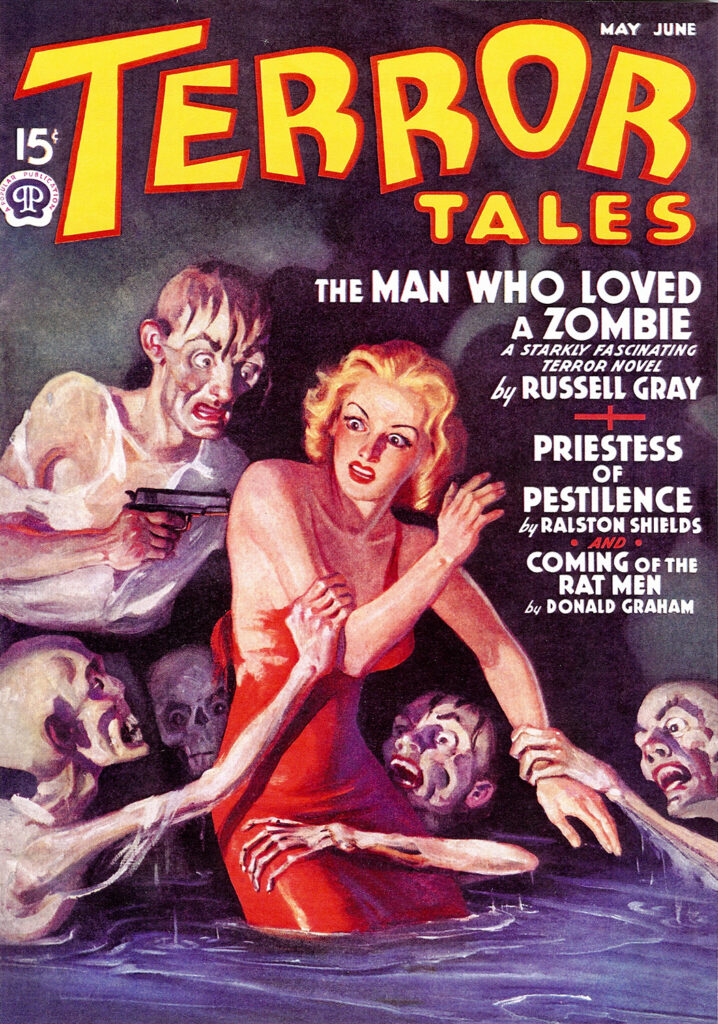 Arthur Leo Zagat gave up his law practice to become a full-time writer. After beginning his career with a series of sf stories co-written with Nat Schrachner, Zagat spent several years writing for the shudder pulps before moving on to the more upscale Argosy. He wrote several stories with undead menaces, but “Revels of the Lusting Dead” is certainly one of the most interesting. Published in the August 1937 issue of Terror Tales, the story pushes far past the boundaries of good taste with scenes of torture, bondage, sadomasochism, violent cat-fighting, and the threat of zombie rape. As offensively misogynistic as it is, the story serves as an excellent example of what makes the shudder pulps so notorious.
Arthur Leo Zagat gave up his law practice to become a full-time writer. After beginning his career with a series of sf stories co-written with Nat Schrachner, Zagat spent several years writing for the shudder pulps before moving on to the more upscale Argosy. He wrote several stories with undead menaces, but “Revels of the Lusting Dead” is certainly one of the most interesting. Published in the August 1937 issue of Terror Tales, the story pushes far past the boundaries of good taste with scenes of torture, bondage, sadomasochism, violent cat-fighting, and the threat of zombie rape. As offensively misogynistic as it is, the story serves as an excellent example of what makes the shudder pulps so notorious.
Another interesting contribution from the shudder pulps is “Corpses on Parade” by husband-and-wife team Edith and Ejler Jacobson. From the April 1938 issue of Dime Mystery, the story features New York City socialites being turned into living zombies by a mysterious menace — a plot device that perhaps contains a bit of rudimentary commentary on issues of class. The Jacobsons went on to create some notable pulp characters, including the hemophiliac detective Nat Perry, as well as The Skull, the protagonist of the one-shot villain pulps The Octopus and The Scorpion.
The creator of such legendary characters as Conan the Cimmerian, Solomon Kane, and Kull of Atlantis, Texas writer Robert E. Howard was one of the giants of the pulp magazines. Though best known as the father of sword-and-sorcery, Howard wrote stories in many different genres including horror, western, boxing, historical adventure, and hardboiled detective stories. He also wrote a number of Southern Gothic horror stories, among which was the zombie story “Pigeons From Hell” published in the May 1938 issue of Weird Tales — a story Stephen King once claimed was one of his favorites.
Based on stories told to him as a child by his African-American housekeeper, “Pigeons From Hell” features a new type of creature, the zuvembie — a female zombie that has the power to create new zombies. The story was adapted for the TV show Thriller in 1961 and is one of the series’ most famous episodes.
Suggested readings
Find out more about zombies in pop and pulp culture in the following.
- Bishop, Kyle William. American Zombie Gothic: The Rise and Fall (and Rise) of the Walking Dead in Popular Culture, McFarland and Co., 2010.
- Carlage, Carla; Raphael Dalleo; Luis Duno-Gottberg; and Clevis Headley, editors. Haiti and the Americas, University Press of Mississippi, 2013.
- Chester, Tony. Zombies Before Romero, The Science Fact & Science Fiction Concatenation, Aug. 29, 2011.
- Jones, Robert Kenneth. The Shudder Pulps: A History of the Weird Menace Magazines of the 1930s, Fax Collector’s Editions, 1975.
- Moreman, Christopher M.; and Cory James Rushton, editors. Race, Oppression and the Zombie: Essays on Cross-cultural Appropriations of the Caribbean Tradition, McFarland and Co., 2011.
- Renda, Mary. Taking Haiti: Military Occupation and the Culture of U.S. Imperialism, 1915-1940, University of North Carolina Press, 2001.
- Schmidt, Hans. United States Occupation of Haiti (1915-1934), Rutgers University Press, 1995.
- Shanks, Jeffrey, ed. Zombies From the Pulps!, Skelos Press, 2014.
- Weinberg, Robert. The Weird Tales Story, Fax Collector’s Editions, 1977.
Bruno Fischer was a regular contributor to the shudder pulps, often under the pseudonyms Russell Gray or Harrison Storm. Fischer was a prolific writer for four decades, authoring several well-received crime and suspense novels after his pulp career ended. Written under his Russell Gray pen name, “The Man Who Loved a Zombie,” was published in the June 1939 issue of Terror Tales. The story makes use of a typical Fischer plot device, in which a regular “everyman” protagonist is put in a tricky situation that tests his moral fiber. In the case of this story, the tricky situation is an army of menacing zombies that includes his fiancée.
Thorp McClusky was a fiction writer and journalist who contributed several notable stories to Weird Tales, among which was “While Zombies Walked” in the September 1939 issue. The story borrows some elements from White Zombie, particularly the concept of a Caucasian zombie-master. Ironically, McClusky’s story seems to have been the inspiration for the later film Revenge of the Zombies (1943), though it was not credited as such.
Of music and folklore
One of the most talented authors to emerge from the pulps, Manly Wade Wellman began his career writing for Weird Tales, Wonder Stories, and Astounding. He had great success in later years as a writer of science fiction and horror, and, in particular, with his Silver John series about a backwoods minstrel who encounters supernatural threats in the Appalachians.
“Song of the Slaves,” published in the March 1940 issue of Weird Tales, hints at Wellman’s interest in both music and folklore. It is also a bit different than some of the other stories in the collection, in that it subverts the role of the zombies in the narrative, making them the sympathetic characters. While it still makes use of some of the typical racial stereotypes of the time, Wellman’s story could be considered somewhat progressive for its day, particularly with its harsh critique of the Atlantic slave trade.
The fantasy pulp Unknown was launched in 1939 by legendary editor John W. Campbell as a sister publication to his successful sf magazine Astounding. In addition to encouraging “higher-brow” fantasy fiction, Campbell also introduced a number of new female authors, among them Jane Rice.
Rice was a favorite of Campbell and would become a regular contributor to Unknown. She went on to write for other sf publications in the 1950s including The Magazine of Science Fiction and Fantasy under the pseudonym Mary Austin. Her zombie story “The Forbidden Trail” was published in the April 1941 issue of Unknown and features wonderful touches of ironic humor that characterized many stories published under Campbell’s editorship.
The modern zombie craze is only the latest expression of our fascination with the walking dead. While the zombie’s appeal and its role as a reflection of the zeitgeist have evolved and changed over the decades — along with our society — it remains a symbol of our mortality and a reminder of the fragility of our social structure. From its birth in the anxieties of America’s pre-WWII imperialist adventures in the Caribbean, to Romero’s critique of modern consumerism in the 1970s and 1980s, to the 21st-century fears of societal breakdown and the apocalyptic collapse of civilization, the zombie has fascinated us for generations and will no doubt continue to fascinate us for decades to come.
About the author
Jeffrey Shanks is an archaeologist, historian, and scholar of early 20th-century popular culture and speculative fiction. In particular, he specializes in the history and literature of the pulp magazines and early comic books. He has published a number of popular and scholarly articles on pulp writers like Robert E. Howard, H.P. Lovecraft, and Edgar Rice Burroughs.


